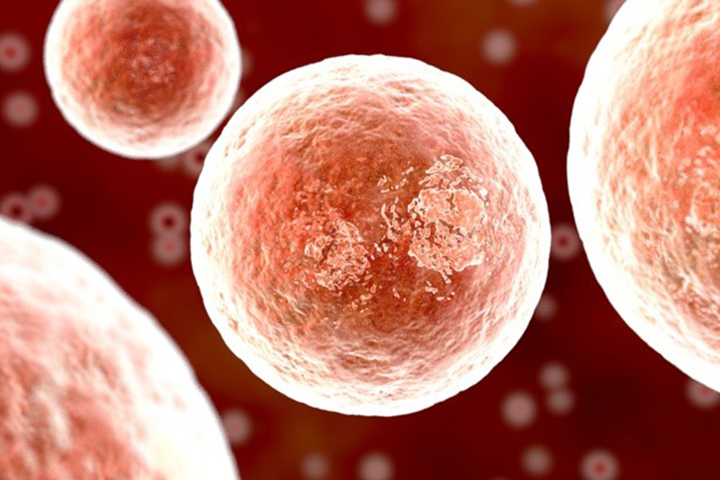Targeting Cancer Metabolism

Imagine trying to halt the spread of cancer by simply changing a malignant cell’s diet.
In simplest terms, that’s the hope of researchers studying cancer metabolism. As scientists continue to delve into the basic biology of cancer cells, their hope is to find agents that can target the metabolism of cancer cells in order to kill them, while sparing healthy cells. One such drug currently under investigation is called SM-88.
How Cancer Cells Get Energy
For nearly 100 years, scientists have known cancer cells generate energy differently than normal cells. Healthy cells get energy through a very complex process that requires oxygen. But not cancer cells. These malignant cells use a less efficient, more primitive metabolic strategy to produce energy. This phenomenon is called the “Warburg effect,” named after German biochemist Otto Warburg.
Even when there is plenty of oxygen available to break down glucose (sugar) to use as energy, a malignant cell generates energy more like yeasts or some bacteria, through fermentation. Fermentation is much less efficient, causing cancer to use 15-20 times the glucose to produce the same amount of energy. As a result, cancer often runs out of glucose and has to use other raw materials for metabolism, like fats and amino acids. Tyrosine is one of those raw materials that cancer prefers, but is rarely used by normal healthy cells.
Enter SM-88
One important take-away is that the Warburg effect results in the formation of high levels of free radicals in malignant cells. Free radicals are unstable atoms that can damage or “oxidize” cells, and have been implicated in everything from aging to numerous diseases. To fight free radicals, the body produces chemicals called antioxidants, similar to what you get from green tea or blueberries.
Cancer cells have developed a protective outer layer called the mucin. Aside from protecting the cell, this mucin layer helps create antioxidants to balance the damage caused by those free radicals. One of the building blocks of mucin is the amino acid tyrosine.
SM-88 (racemetyrosine, developed by Tyme Technologies, Inc.) is a combination of four agents, including an altered dysfunctional tyrosine component, that appear to work synergistically to increase the number of free radicals in cancer cells. With that increase of free radicals and breakdown of its mucin layer, cancer cells become overwhelmed and are selectively killed by oxidative stress, while healthy cells are spared.
“What the drug does in a way is give cancer cells what they naturally crave, which is tyrosine,” explains Ben Taylor, President and CFO of Tyme. “SM-88 uses a dysfunctional tyrosine to interfere with the entire metabolic process. When cancer cells try to use the dysfunctional tyrosine to make proteins, it doesn’t work and the protective mucin layer starts to break down. Without this basic defense, the tumor is exposed to the destructive effects of free radicals as well as the patient’s immune system. The result is the death of the cancer cell.”
Early Work Shows Promise
SM-88 has already been studied in some 100 patients. Anti-tumor activity was displayed across 13 cancer types. The drug showed encouraging safety profiles without significant reports of toxicity or adverse effects. Some patients also experienced improvements in Eastern Cooperative Oncology Group (ECOG) “performance status,” which include functions of daily living and disease progression, among other measures.
Results in 10 pancreatic cancer patients with metastatic or recurrent disease were presented at the 2018 American Society of Clinical Oncology Gastrointestinal Cancers Symposium in San Francisco. Patients were evaluated for overall survival and response rate, as well as progression-free survival. ECOG performance status and pain scores were also evaluated.
Of the 10 patients:
- 40 percent (4 in 10) survived more than 12 months
- 30 percent (3 in10) achieved a complete or partial response
- All subjects (10 in 10) reduced or maintained pain scores during their first cycle of SM-88 therapy, in addition to gaining or maintaining weight.
- 80 percent (8 in10) of patients showed improvement in ECOG performance status during the first treatment cycle, with 30 percent (3 in 10) demonstrating an improvement of greater than one (1) point during this 6-week period. All patients improved or maintained European Organisation for Research and Treatment of Cancer Quality of Life Questionnaire subject-reported health and quality of life outcomes after initiating SM-88 therapy.
“Talking to patients about pancreatic cancer can be very difficult because the disease is so frightening,” says Dr. Giuseppe Del Priore, a practicing oncologist and chief medical officer for Tyme. “Metastatic patients also have very few options and the treatments can be very difficult, especially in terms of side effects. To be able to potentially offer patients something [SM-88] that may halt disease progression while not destroying their quality of life would be incredibly life-changing.”
Based on this early data, a two-stage, open-label phase II clinical trial for metastatic pancreatic cancer is underway. The trial is currently recruiting patients in New York, Texas, Connecticut, and California, and the plan is to have more than 35 sites in North America on board within the next few months.
The trial will include approximately 100 patients with metastatic pancreatic cancer for whom at least one prior line of therapy has failed. In the first stage, approximately 36 patients will be randomized 1:1 to receive either a 460 mg or 920 mg per day dose of SM-88. The doses of the other components that make up the agent will not be changed. After safety, efficacy, and other variables are analyzed for these patients, the goal is to have the SM-88 dose that shows the best efficacy be given to the remaining 70 or so patients.
“All we can say at this point is that we are very hopeful these patients get good news,” says Taylor. “All metastatic cancers can be devastating, but pancreatic cancer is just so tough in so many ways. We knew that we needed to try to do something for these patients.”
An Update: July 2019
SM-88 continues to show promise in treating metastatic pancreatic cancer, according to data presented at the European Society of Medical Oncology 21st World Congress on Gastrointestinal Cancer held in Barcelona, Spain on July 4, 2019. This updated data is from the ongoing multicenter open-label phase II TYME-88-Panc study (Abstract #160).
More than 80 percent of patients had received at least two prior lines of therapy. Of the 49 patients, 38 patients were evaluable for efficacy, as defined in the protocol. SM-88 demonstrated median overall survival of 6.4 months as of April 25, 2019. Efficacy indicators, including achieving stable disease or better and decreases in circulating tumor cells, showed strong correlation with greater overall survival. Patients who achieved stable disease or better had a statistically significant improvement in survival with a 92 percent reduction in risk of death. Only 4 percent of patients experienced a serious adverse event that was deemed to be at least possibly related to SM-88. Based on these results, the hope is to initiate a randomized trial of the agent later in 2019.
“This is a group of patients who desperately need better therapies since there are no FDA-approved treatments or recommended guidelines,” says pancreatic cancer specialist and Let’s Win co-founder and Science Chair Dr. Allyson Ocean, of NewYork-Presbyterian Hospital/Weill Cornell Medical Center. A drug that extends survival with a favorable toxicity profile would be game-changing for this heavily-treated population, she adds. “I am looking forward to a randomized trial because from that data we may be able to provide these patients with improvement in survival while simultaneously improving the quality of their lives.” Ocean is a co-author of the TYME-88-Panc study.





